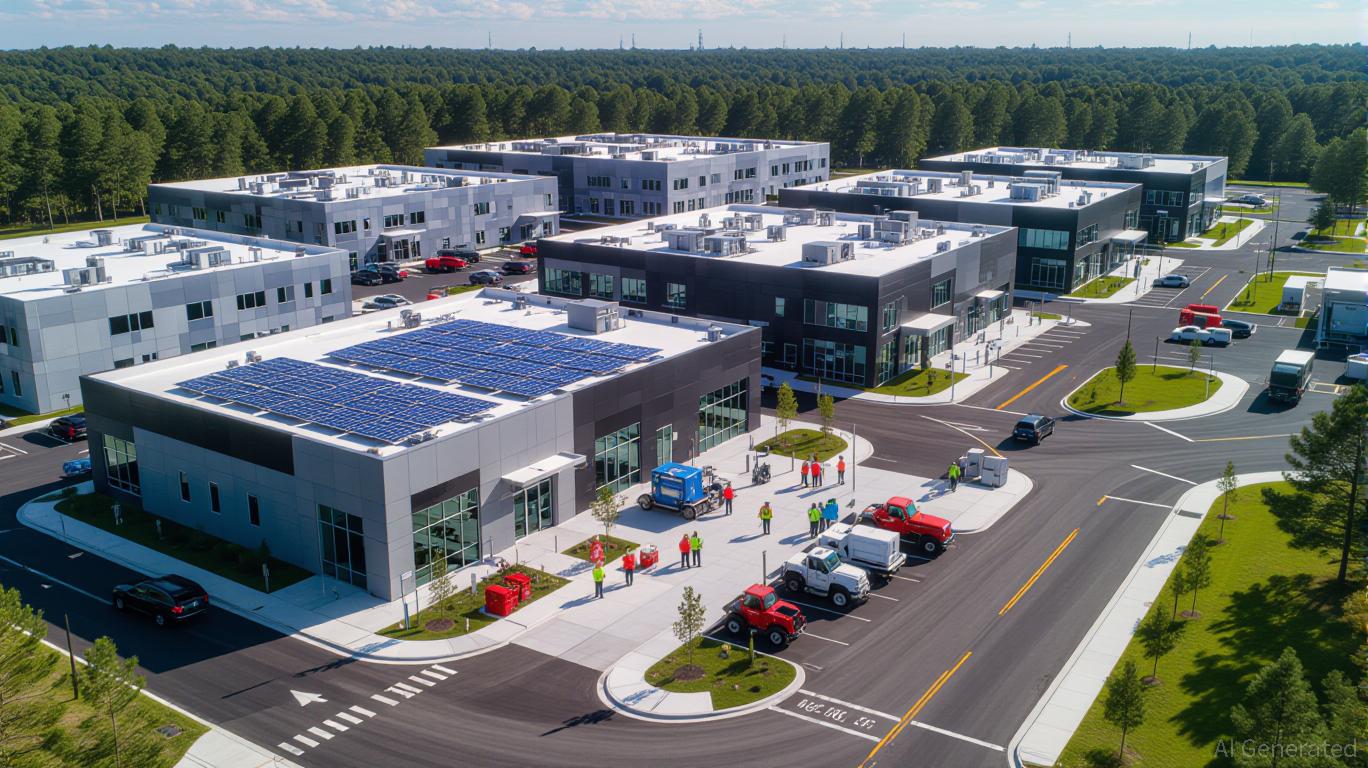The Transformation of Webster, NY: Targeted Property and Infrastructure Initiatives After the Xerox Era
- Webster , NY, secured a $9.8M FAST NY grant to transform the former Xerox campus into a shovel-ready industrial hub, part of Governor Hochul’s upstate revitalization strategy. - Infrastructure upgrades, including road and sewer improvements, aim to attract advanced manufacturing and logistics firms by reducing development risks and costs. - The Xerox campus redevelopment includes mixed-use projects, projected to create 250 jobs and boost property values through residential and commercial integration. - W
Webster, NY: A Model for Industrial Renewal Through Strategic Infrastructure
Webster, New York, is undergoing a remarkable transformation into a center for advanced manufacturing and industrial real estate, offering a prime example of how targeted infrastructure investment can drive economic resurgence. Central to this evolution is a $9.8 million FAST NY Shovel-Ready Grant awarded in 2025, which is being used to redevelop the former Xerox Wilson Campus and neighboring properties into a state-of-the-art industrial hub. This initiative, part of Governor Kathy Hochul’s broader strategy for upstate New York, highlights the crucial role of infrastructure preparedness in attracting top-tier manufacturing and logistics companies.
FAST NY Grant: Laying the Groundwork for Growth
The FAST NY program accelerates development by pre-approving key infrastructure improvements, positioning Webster as a leader in post-industrial renewal. The $9.8 million grant is funding essential upgrades at the Xerox campus, such as new roadways, expanded sewer systems, and comprehensive electrical planning. These enhancements are more than just technical updates—they are strategic investments that convert a 300-acre brownfield into a ready-to-develop site suitable for advanced manufacturing, semiconductor fabrication, and clean energy projects. Additionally, the grant is supporting infrastructure at the NEAT (Northeast Area Technology) and fairlife sites, broadening Webster’s industrial landscape.

By focusing on reducing development risks through pre-approved infrastructure, the program addresses national challenges such as escalating construction expenses and slower leasing activity due to rising interest rates. Streamlined permitting and infrastructure readiness mean developers can move projects forward more quickly and with less capital, aligning with the state’s vision of a resilient economic ecosystem where public investment paves the way for private sector growth and job creation.
Xerox Campus: Pioneering the Bluefield Approach
Once emblematic of industrial decline, the Xerox Wilson Campus is now a showcase for the “bluefield” model—a blend of industrial and residential development that supports sustainable progress. The site’s redevelopment includes not only infrastructure improvements but also an emphasis on walkability and mixed-use opportunities. The demolition of the 600 Ridge Road facility, completed by the end of 2025, is making room for a vibrant mix of residential, retail, and commercial spaces. Supported by state initiatives like the Brownfield Opportunity Area program, this approach overcomes the limitations of traditional industrial parks by fostering communities where employees can live close to their workplaces, improving both workforce stability and quality of life.
The economic benefits are already evident. By 2026, the Xerox campus is expected to offer over one million square feet of industrial space and attract major projects such as the $650 million fairlife® dairy plant, which will generate 250 new jobs. Meanwhile, the Village of Webster’s $4.5 million NY Forward Community Revitalization Program is breathing new life into the downtown business district, and an additional $500,000 in transportation funding is enhancing bike and pedestrian access to redevelopment areas. These coordinated investments are anticipated to boost property values and draw further private investment, especially in sectors like e-commerce logistics and renewable energy.
Statewide Impact: Setting a Precedent for Upstate New York
Webster’s achievements are part of a broader movement transforming industrial real estate across upstate New York. Since 2022, the FAST NY program has supported 37 projects statewide, upgrading nearly 7,700 acres and attracting over $283 million in private investment. Sites like the Triangle Site in Oneida County, which received $32 million to support semiconductor supply chain businesses, reflect a similar focus on high-tech manufacturing. Collectively, these projects demonstrate how infrastructure readiness can lower the risks of industrial development, making upstate New York a strong competitor to coastal markets.
Webster’s strategic location—close to Buffalo’s port and rail networks—further enhances its attractiveness. With industrial vacancy rates in Western New York dropping to as low as 2%, compared to the national average of 7.3%, the region is increasingly appealing to companies seeking cost-effective alternatives to pricier coastal cities. The Xerox campus exemplifies the advantages of shovel-ready sites, which offer shorter development timelines and lower upfront costs. Developers are also gravitating toward smaller, multi-tenant industrial buildings that provide stable returns, a trend that fits well with Webster’s modular infrastructure upgrades.
Overcoming Obstacles and Looking Ahead
Despite these positive developments, challenges remain. The national industrial real estate sector continues to face higher construction costs and slower leasing activity, largely due to increased interest rates. Nevertheless, state-supported infrastructure investments and Webster’s advantageous location help the town remain resilient. The alignment of infrastructure completion in 2025 and full site readiness by 2026 creates a timely opportunity for investment, particularly in fields like semiconductor manufacturing and renewable energy, where robust supply chains are essential.
Webster’s journey offers valuable insights for other communities and investors seeking to revitalize post-industrial areas. By emphasizing infrastructure preparedness, encouraging collaboration between public and private sectors, and integrating residential and commercial development, Webster is not only rejuvenating its industrial base but also establishing a sustainable blueprint for future growth. As upstate New York continues to attract high-value industries, Webster’s experience is poised to influence the next wave of industrial real estate investment throughout the region.
Disclaimer: The content of this article solely reflects the author's opinion and does not represent the platform in any capacity. This article is not intended to serve as a reference for making investment decisions.
You may also like
Ethereum News Today: Ethereum’s Fusaka Update: Scaling Goals Face Challenges From Validator Compromises
- Ethereum's Fusaka upgrade (Dec 3, 2025) introduces PeerDAS to enhance scalability by verifying rollup data without full dataset downloads. - BPO forks enable incremental blob capacity increases (e.g., 14 blobs/block by Jan 7, 2026), avoiding disruptive hard forks while supporting 100k+ TPS via L2 solutions. - L2 data fees may drop 40%-60% with PeerDAS, but validators face trade-offs between reduced storage demands and increased upload requirements as blob capacity grows. - Market reactions remain mixed:

Bitcoin Updates: Challenges in Blockchain Infrastructure Drive Growth of Mixed Sustainability Approaches
- Blockchain networks show mixed fee revenue, with only 11 surpassing $100K weekly thresholds, highlighting structural inefficiencies and speculative challenges. - Lumint's hybrid staking model combines AI-driven tools with decentralized rewards to address PoW/PoS flaws, aiming for sustainability and reduced energy waste. - Bitcoin rebounded to $87,000 amid 2% market growth, but extreme fear persists (index at 20), with $380M in liquidations and mixed retail sentiment. - Hybrid solutions like Lumint priori

DASH drops 4.37% within 24 hours following Australian wage agreement
- DoorDash's stock fell 4.37% in 24 hours amid a 25% wage hike agreement for Australian delivery workers, including mandatory accident insurance. - The deal raises near-term cost concerns as operating margins stand at 5.5%, but reflects improved labor standards and regional commitment. - Institutional ownership rose to 90.64% with major investors increasing stakes, signaling long-term confidence despite recent volatility. - Analysts maintain a "Moderate Buy" rating ($275.62 target) as DoorDash shows strong

Ethereum Updates Today: Privacy First: Buterin Backs Messaging’s Fundamental Transformation
- Vitalik Buterin donates 128 ETH ($390K) to Session and SimpleX to advance metadata privacy and permissionless design. - Platforms use decentralized infrastructure and cryptographic IDs to protect communication metadata, resisting censorship and AI surveillance risks. - Donation counters regulatory threats like EU's Chat Control while promoting privacy-focused innovation in encrypted communication. - Experts emphasize permissionless account creation as critical for digital freedom, despite trade-offs like
